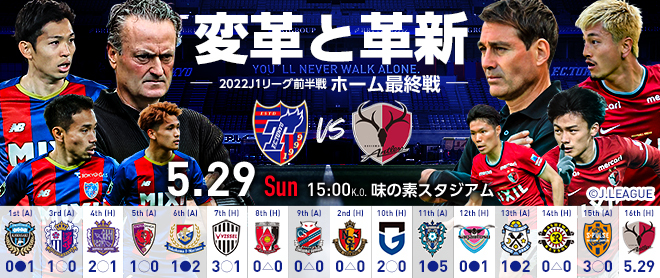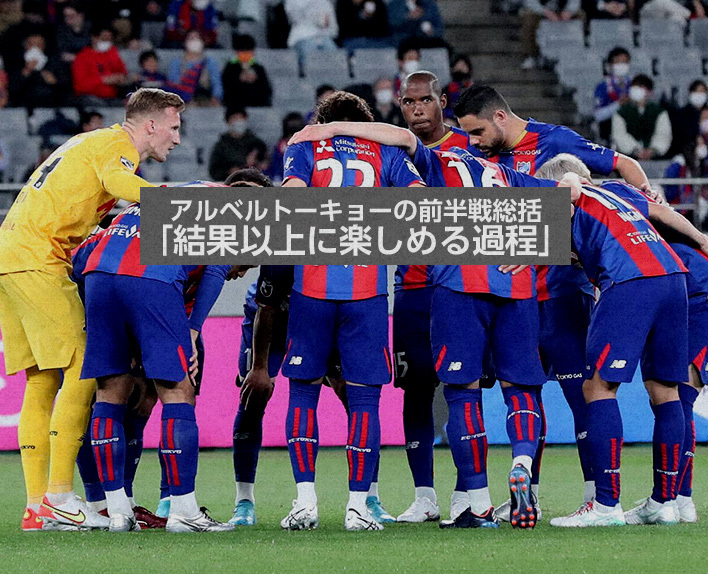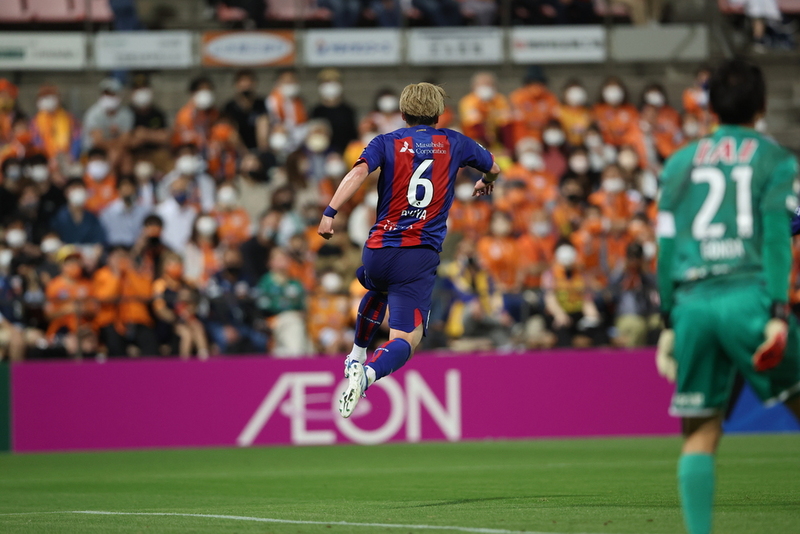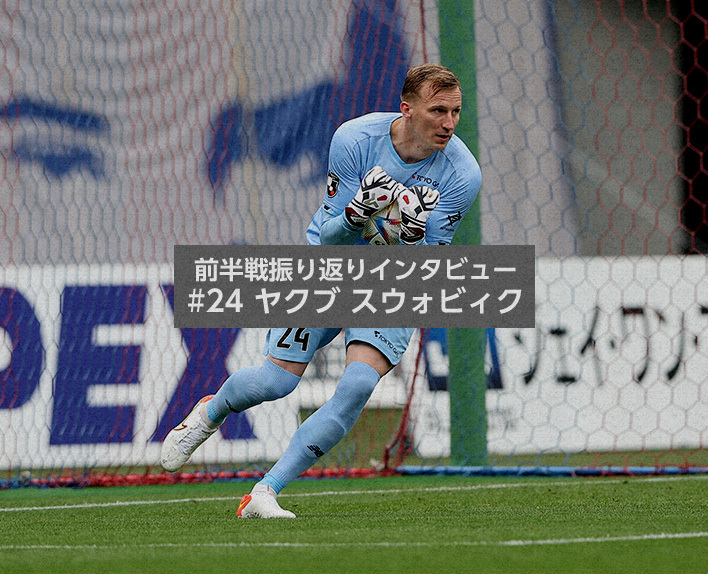The first half of the season for Albert Pobor Tokyo, which started with a completely different playing style, is about to end. While ambitious, it is also a challenging season. If I were to subjectively grade the performance before the halfway point, I would give it a score of "65 out of 100." This score carries a bit of expectation above the passing mark.
The team's current situation, including elimination from the group stage of the Levain Cup, three consecutive league losses since May, and a lack of scoring in recent games, may lead many to think that a "failing grade is inevitable" when viewed as a "point." However, when looking at the content of the play and the team's changes since the start of the season as a "line," it is clear that there has been growth and improvement.
Regarding the evaluation of the positional play advocated by coach Albert PUIG ORTONEDA, I believe it cannot be measured by statistics such as ball possession rate or number of goals. While there are limitations to verbalizing aspects that can be visualized, the evaluation criteria for positional play that I gained during my five years in Spain is, "Were we able to play effectively in each situation?"
Soccer is a sport played with 11 players on each side, and because both teams have the same number of players, the key point is how to create a numerical advantage in both offense and defense in each situation. For example, when looking at the build-up phase of Albert Tokyo's attack, it can be seen that there is no fixed shape, and the approach flexibly changes according to the opponent's formation and movements.
In order to build up near the final line, the principle is to create a "+1" against the number of the opponent's front press, but the pattern of "Takuya AOKI dropping between the center-backs" is not fixed. The important thing is to create a numerical advantage of "+1" by observing the opponent, and to utilize that numerical advantage to break through the opponent's first line.
Since players are required to make situational judgments based on principles rather than patterns in each phase, the mental load on players is particularly high. However, the individual understanding of situations by players and the harmony as a group have steadily improved since the opening. Among these, the stability of the build-up, which is the start of the attack, has significantly increased, and critical passing errors from center-backs and goalkeepers have markedly decreased compared to the beginning of the season.
However, the difficulty of soccer lies in the fact that opponents come up with strategies. This season, every team basically applies high pressing against FC Tokyo's positional play. In particular, they tend to mark the three midfielders closely, cutting off passing lanes to the center, which inevitably leads to a circulation of passes that goes around the outside, making it easier for the opponent to create opportunities to regain possession.
In response to such opponents' strategies, Albert Tokyo has begun to develop passing routes that do not follow the opponent's guidance, utilizing the post work of the lone striker, Diego OLIVEIRA, to practice press avoidance by bypassing the midfield. It is indeed an effective play and a skillful press avoidance, but the problem here is that there are few players who receive Diego's passes facing forward.
Both Shuto ABE and Kuryu MATSUKI are active midfielders with high mobility, often surpassing Diego OLIVEIRA, who drops back for hold-up play. This results in many situations where there is no opportunity to receive the ball positively and quickly accelerate the attack.
An important factor in advancing the attack in positional play is the "support that creates elevation," similar to the movement that creates passing lanes. To break through a high-level opponent's defensive block and each line, advancing cannot rely solely on forward passes. It is also necessary to utilize lateral, diagonal, and backward passes. For this, it is essential to create elevation through player positioning. If constant forward movement is not possible, sometimes a method of advancing three steps forward and two steps back is necessary.

This season, the defense is also aggressive and proactive. They execute high pressing from the front line and work to win the ball in the opponent's territory. It is undoubtedly fair to say that with foreign players like Diego OLIVEIRA, Leandro, and Adailton performing hard work such as pressing and chasing so devotedly, this team has one of the best disciplines in J1.
Of course, to implement a high press and win the ball in high positions, the entire team's compactness and high line are necessary. In the first half of the season, Albert Tokyo has been moving organically and building a defensive organization connected like a chain. Due to their attacking style, attention tends to focus on their offense when they have the ball, but I believe the most commendable aspect of the first half of the season was the construction of this defensive organization.
However, there are certainly still issues with defense. Due to the risk of creating space behind with a high line, when the press from the front line is countered, there is a need to drop the defensive line, but the judgment is often still slow. When this happens, what occurs is that the opposing forwards become free when they drop into the midfield to create a play instead of staying behind the defensive line, making it easy for them to set up a play. While this may seem better than situations where the space behind the defensive line is exploited and leads to a crisis, it is mentally taxing for players in front of the midfield because they feel they have 'won the ball' only to have the opponent create a play and attack, which also increases the physical burden due to the longer distance to recover.
Even if there is a clear defensive concept as a team, whether to raise or lower the defensive line in such situations ultimately depends on the individual judgment of the defenders. Therefore, the decision to lower the defensive line more quickly, which appears "safer" based on past experiences and familiar styles, tends to take priority. However, this is unavoidable. After all, changing a style is a challenging task that involves altering these seemingly trivial yet very important habits and criteria for judgment.
That said, the visible struggles and processes are clear and logical because the style being advocated and the football being aimed for are well-defined. The fact that we can see both the parts that have gone well so clearly in the first half of the season and the areas that still remain as challenges is nothing but the potential for growth as a team.
It is undeniable that results are everything in the business of football as a sport. Fans and supporters rejoice and despair over the results of their team and should do so. However, as we aim for positional play that is proactive and creates action rather than reactive football that adapts to the opponent, I hope that fans can enjoy the process even more than the results.
Text by Ichiro Ozawa (Football Journalist)
▼On Ichiro Ozawa's YouTube channel "Ichiro Ozawa Periodista," a preview video of the Kashima Antlers match on 5/29 (Sunday) has been released featuring a discussion with Takashi FUKUNISHI. Please take a look!








